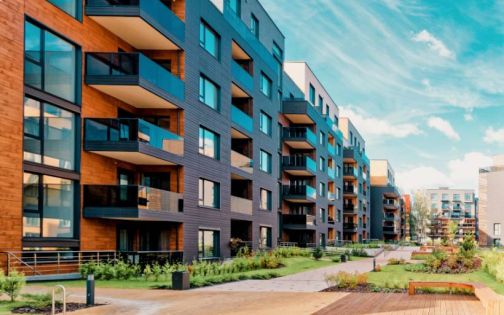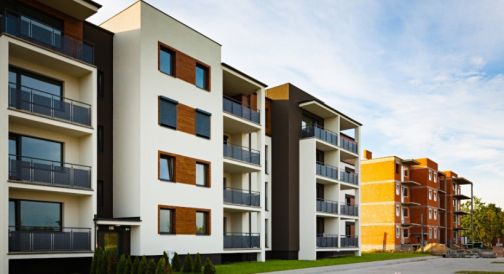Key factors that will most likely influence the government’s 'Heat and Buildings Strategy’

There are seven key factors that indicate where the industry could help in our efforts to decarbonise heat:
- Long-term energy efficiency targets for new build commercial and residential developments
- Long-term policy and funding plans for decarbonisation of existing housing stock
- Action led infrastructure development plans
- Plans to deal with the challenges of a skills gap
- Implementation of energy levies
- Wider local regulatory powers to increase regional impact
- Growing public awareness of low carbon technologies
How can long-term energy efficiency targets for new developments stimulate innovation in the industry?
To promote confidence and attract market investment the industry needs a clear and reliable trajectory for the transition to net-zero 2050. This could also provide clarity for development planning and futureproofing. The Clean Growth, one of The Grand Challenge missions, sets the tone, with a plan to at least halve energy use in new buildings by 2030. Building Regulations can help by setting targets for the industry to work towards and to help achieve the UK’s environmental ambitions.
Defining the strategy for retrofit is undeniably complex. But it is possible to establish the long-term energy efficiency targets for new build commercial and residential developments. The following is an example of an achievable energy-efficiency timeline for the industry to work towards:
- Building Standard 2020: 31% carbon saving beyond Part L 2013
- Building Standard 2025: 80% carbon saving beyond Part L 2013
- Building Standard 2030: 90% carbon saving beyond Part L 2013
- Building Standard 2035: 100% carbon saving beyond Part L 2013
Focus on achieving targets, not on meeting regulatory standards, for specified technology would help to support industry innovation. When applied to construction, this would provide the design freedom to specify compliant technology that fits with project objectives.
How can we accelerate the decarbonisation of existing housing stock?
Decarbonising the heat in existing buildings is pivotal if we are to be successful in achieving the UK’s 2050 net-zero target. There are concerns within the industry about the level of retrofit capital or operational and energy costs required by the retrofit of existing housing stock and existing commercial buildings. Alignment of policy strategy and funding would not only alleviate these concerns but would also provide the specification freedom to select the most appropriate low carbon technology for each project.
The specific conditions of various tenures are adding complexity to plans for decarbonisation of heat in existing housing. To encourage low carbon technology uptake among the less accessible owner-occupiers, engaging a focused public campaign bolstered with adequate funding schemes may be needed. To increase the specification of low carbon technologies for social housing projects, this tenure will need to steer away from the long-standing proliferation of gas technology. The upcoming off-gas legislation might be the opportunity to do that. In terms of cost, innovative heat pump technologies can help both private and social landlords to manage their building stock more efficiently.
The introduction of measures, such as a gradual increment of EPC (Energy Performance Certificate) rating is the first step to acknowledging the challenges of retrofit and supporting business-led housing decisions. The industry would thrive on the flexibility this would afford each tenure type.

Can flexible electrical storage contribute to aligning the energy infrastructure development with UK decarbonisation ambitions?
If we are to successfully move away from using natural gas towards the electrification of heating, we need to implement certain measures. These would help to increase electrical capacity, without impacting on grid stability.
Whilst emerging technologies are yet to be proven in practice; wider specification of flexible energy storage can help to create energy reserves in homes now. High retention storage heating is an example of existing technology that could vastly increase the total number of electrical systems that can be added to the grid. This would reduce the requirement for network capacity alterations and protect the stability of the grid. Flexible storage promotes efficient energy management in homes and buildings. It also aligns low energy cost with low carbon, a holistic benefit for occupiers and developers alike.
How can we remove the current skills gap barrier and expedite uptake of low carbon technologies?
The current skills gap is a barrier that needs addressing to enable a faster roll-out of low carbon technologies. The industry would benefit from nationwide courses for all entry levels and a speedy transition from gas-based to low carbon solutions skillsets. Hybrid technology, such as in-apartment hot water heat pumps, can be used for upskilling across the board and could help keep installation costs to the minimum for future low carbon technologies. Responsible manufacturers, such as Glen Dimplex Heating & Ventilation (GDHV), have a role to play by offering information and courses to support specifiers, designers, and installers.
Could energy levies increase the demand for heat pump and hybrid technology?
As more homes rely on electric heating solutions, the cost of electricity will remain a hot topic in the industry. The 2017 Cost of Energy Review indicates that ‘it is the government ambition for the UK to have the lowest energy cost in Europe for both households and businesses. Lower electricity costs could accelerate a wider application of heat pump technology on our path to zero-carbon housing and crucially, contribute to reducing occupant fuel poverty.
Can increased local regulatory powers improve support for low carbon development?
Regional differences across the UK mean that local capacity and capabilities to decarbonise vary. With local routes of statutory regulation open, developers could benefit from clear guidelines. This may result in greater clarity for futureproofing energy strategies of developments and increase business agility.
Can consumer demand impact the speed at which we decarbonise heat?
With the Simple Energy Advice website now live, public awareness of all available low carbon technologies is anticipated to increase. Informing the public of all low carbon solutions, not just heat pumps, and incentivising their application may increase the demand for the technology. This change in public perception could expand demand for properties that utilise low carbon solutions.
On the supply side, feedback to the manufacturers, designers and developers is invaluable for improvements and innovation of low carbon solutions. We can already see the impact that advances in complementary technologies such as, direct acting panel heating, smart controls and energy storage, have on the increased efficiency of developments. Innovative systems like the Edel Hot Water Heat Pump, and ambient loop solutions such as the Zeroth Energy System, offer a choice to install low carbon solutions for every property. This includes cases where traditional renewable installations are challenging due to lack of space, capital investment or technical limitation in the area.
The Heat and Buildings Strategy considers the most efficient way to decarbonise heat and is likely to transform the way we build and heat our buildings. The wheels are now in motion.
GDHV understands that there isn’t a simple answer to the forthcoming challenges. We believe that with the flexibility of specification remaining, and given time to digest and prepare, the industry can work together to achieve the UK’s net-zero 2050 target.
To discuss how your development or retrofit can benefit from our range of solutions or to get advice on futureproofing your project with a low carbon energy strategy, contact our team of HVAC specialists.








